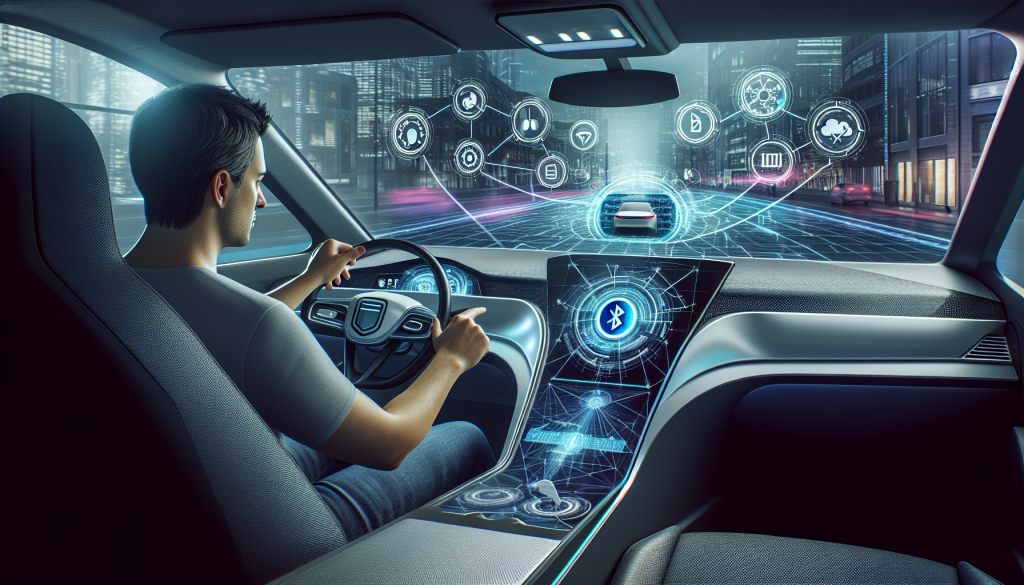
Beyond Bluetooth: Next-Gen Car Connectivity You Didn’t Know About
When it comes to staying connected on the road, most drivers rely on Bluetooth technology. But did you know that there is a whole new world of next-generation car connectivity out there? From integrated apps to voice control, the possibilities are endless. In this article, we’ll take a look at some of the latest advancements in car connectivity and how they are revolutionizing the driving experience. So fasten your seatbelts, because we’re about to go beyond Bluetooth and explore the next level of car connectivity.
The Rise of Integrated Apps
One of the most significant developments in car connectivity is the integration of apps into the vehicle’s infotainment system. Instead of relying on your smartphone for music and navigation, you can now access these features directly from your car’s dashboard. This not only eliminates the need for multiple devices but also allows for a more seamless and hands-free driving experience.
Popular apps such as Spotify, Waze, and Google Maps are now available in integrated versions for different car models. With the help of Apple CarPlay or Android Auto, you can easily connect your smartphone and access all your favorite apps safely while driving. And with the increasing demand for these integrated apps, car manufacturers are constantly updating and improving their systems to provide a better user experience.
Voice Control Takes the Wheel
Another game-changing feature in next-gen car connectivity is hands-free voice control. With just a few simple commands, you can now control various functions of your car, from adjusting the temperature to making phone calls. This not only allows for a safer driving experience but also makes it more convenient and easier to use the car’s features.
Voice-controlled virtual assistants, such as Amazon’s Alexa and Google Assistant, are also becoming increasingly popular in newer car models. These assistants can help you with a variety of tasks, such as playing music, checking the weather, or even ordering food. And with the rise of artificial intelligence, these assistants are becoming smarter and more sophisticated, providing a more personalized and intuitive driving experience.
5G Technology and its Impact on Car Connectivity
As 5G technology continues to roll out, it is expected to bring significant advancements in car connectivity. With its high-speed and low-latency capabilities, 5G networks will allow for faster and more reliable communication between vehicles and their surroundings.
This will open up new possibilities for connected cars, such as real-time traffic updates, improved navigation, and even the potential for self-driving cars. 5G will also enhance the overall driving experience by enabling a smoother and more interactive infotainment system, with high-quality videos and graphics.
The Future of Car Connectivity
With the rapid advancements in technology, the future of car connectivity looks promising. While Bluetooth has been the go-to option for in-car connectivity for many years, we are now seeing a shift towards more integrated and intelligent systems. The integration of apps, voice control, and the rise of 5G technology are just the beginning of what’s to come.
Car connectivity will continue to evolve and become an essential aspect of the driving experience. As more and more cars become connected, we can expect to see a more efficient and safer road network. So the next time you hop into your car, remember that there’s more than just Bluetooth when it comes to staying connected.
Conclusion
In today’s fast-paced world, staying connected is more important than ever, even on the road. And with the advancements in next-gen car connectivity, it has become easier and safer to do so. From integrated apps to voice control, and the rise of 5G technology, the possibilities are endless. So get ready to upgrade your driving experience because the future of car connectivity is here, and it’s only getting better.
Disclaimer: The views and opinions expressed in this article are those of the author and do not necessarily reflect the official policy or position of any company or organization mentioned. Any information or examples provided should not be construed as professional advice.
